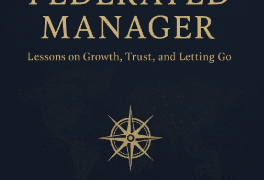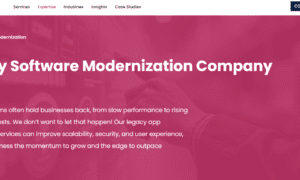Sumangali Krishnabhat is Senior Vice President, Controller, at Redwood Trust, a major provider of housing credit for the residential and commercial real estate sectors. As a strategic finance and technology leader, she specializes in fintech implementations and international financial asset and debt management with a focus on accounting, tax optimization, and liquidity management. For over two decades, Suma has applied her significant expertise in driving operational efficiencies and regulatory compliance across global markets in support of major financial institutions, private equity firms, and hedge funds. She is particularly experienced in leveraging innovative Artificial Intelligence (AI), Machine Learning (ML), and Robotic Process Automation (RPA) technologies to design and drive digital transformations that streamline financial processes, deploy advanced analytics, and improve reporting and compliance functions.
Suma earned a bachelor’s degree in Business Management from Bangalore University, India in 2001, and received her MBA in Finance from ICFAI University, India, in 2010. In 2016 she relocated to Irvine, California (US) for a senior finance position in a private equity firm, and in 2017 she earned the Institute of Management Accountants (IMA) Certified Management Accountant (CMA) credential and the California State Board of Accountancy (CBA) Certified Public Accountant (CPA) credential. She maintains active CMA and CPA licenses.
TechBullion spoke with Suma about how new fintech tools are changing operational processes in the finance industry, and how she is using her experiences at the intersection of technology and strategic finance to optimize finance, accounting, and tax functions.

Sumangali Krishnabhat
Q: Suma, tell us about your background. Your academic training was in Finance and Business Management, and you began your professional career as an Analyst/Operations Manager at the global management consulting firm ranked number one by Forbes in 2024. What led you to develop fintech expertise, and how did you pursue technology education?
A: I was always intrigued by how technology played a role in driving efficiency across almost all aspects of enterprise ecosystem. My role at the consulting firm propelled me to apply my inspiration in the processes I performed, and to gradually influence engagement teams that serviced the clients. For example, a simple organic automation tool I designed using MS Access helped identify duplicate invoices for a large client in the travel industry. This innovation successfully reduced the manual hours spent on reviews and decreased the error rate by 80%. This early win, among others, solidified my interest in finance technology.
Q: You’ve led numerous digital transformations across the finance sector—how are fintech innovations like AI, ML, and RPA currently reshaping core financial operations at your organization, and how do you see fintech impacting the finance industry overall?
A: Fintech innovations are significantly reshaping core financial operations by automating processes, improving data analysis, and enhancing decision-making. We recently rolled out CoPilot and the Enterprise version of ChatGPT to all departments within the organization. In general, these models have come in handy for addressing day-to-day business needs such as drafting emails, recording minutes from a meeting or the ability to retrieve data from a shared document repository. We are seeing a wider interest in using these tools in areas like drafting technical accounting memos and accounting data analysis. We built financial reports using the Workday integrated AI tool, which has brought in agility and flexibility to the financial analysis process. There is a lot that can be leveraged with AI models, and we believe the company is well positioned to progress in that direction.
Q: Do you have an underlying strategic approach to designing digital transformations with fintech applications? Can you share some of your best practices?
A: It is important to ideate the transformation process, particularly focusing on current and end state. Since digital transformation can be capital intensive, we need to make sure the solution identified can withstand the test of time, as well as technological advancements. For instance, there are multiple vendors in the market offering tech products for mortgage loan and accounting operations. In one of our implementations, we reviewed at least five vendors, before choosing a vendor who offered a proven, innovative product that merged mortgage loan operations and accounting in one enterprise resource platform. This reduced implementation time by 40%, since working on a single catch-all platform would mean lesser integration challenges. It is also a good practice to evaluate processes across interdependent departments and standardize tasks so there is more predictability, which is a key to AI or RPA implementations.
Q: Thinking both in technical and stakeholder terms, what are some of the biggest challenges you’ve faced in integrating AI and ML technologies into legacy financial systems, and how did you overcome them?
A: For AI and ML technologies to work effectively, finance organizations need to look at standardizing their processes. This is key to achieving higher success rates, as a non-standard process would mean that there is lack of a repeatable pattern for AI models to learn from, and thereby develop. Re-evaluating risks and developing controls, especially around financial data security, would be of utmost importance to investors and lenders. In my leasing equipment finance experience, we introduced Lease Plus to track lease and loan originations, in addition to building capabilities for financial accounting and reporting. One of the early challenges we faced was around the inability to integrate Lease Plus with the Accounting ERP due to non-standard lease origination practices. Direct finance leases are strictly viewed under the new ASC842 lease accounting guidelines. Due to non-standard practices, every lease involved a manual intervention to classify as either a sales-type lease or a direct financing lease. This determination impacts accounting for lease payments or sale economics. Lack of standardization hindered our ability to leverage either Lease Plus or the Accounting ERP to the fullest.
Through firm-wide collaboration and education, we achieved a higher degree of process standardization, which eventually helped us to successfully integrate Lease Plus and Accounting ERP. This type of change management around standardization is something every organization should consider as they take up automation initiatives.
Q: Throughout your career, you have consulted for and worked with hedge funds, private equity (PE), and major financial institutions—how do fintech priorities differ across these sectors, especially in terms of automation and data analytics?
A: Hedge funds and PE’s are highly data-driven, leveraging vast datasets including historical investment patterns. Market sentiments in response to notable political, economic, and geopolitical developments is key for generating Alpha. A private credit firm I worked with earmarked material budget outlay from fiscal 2023 through 2025 for phased automation projects. These projects facilitated real-time data analytics and offered sophisticated quantitative models aiding profitable investment decisions. Firms are also spending more on quantitative, dynamic, and real-time reporting to investors. In my Private Credit experience, we introduced a Net Asset Value reporting platform which allowed investors to monitor their private credit investments through desktop and mobile applications. The platform offered the ability to look at either individual or strategy level performance metrics as soon as fund accounting books were signed off. This worked well for the firm and elevated our value proposition during fund raising efforts.
Q: How has Robotic Process Automation specifically improved accounting and tax functions in your current role, and where do you see its limits? Do you envision new applications for implementing RPA?
A: We implemented a unique micro automation bot in the mortgage lending space for converting loan remittances from servicing portfolio tapes into journal entries. This involved in-depth data mapping and scripting to identify transaction types and then codifying them to generate GAAP-compliant journal entries. The tool eliminated manual intervention in processing transactions, which saved valuable manhours that could be repurposed into value-added tasks. The power of technology-enabled accounting is immeasurable, and we can see most organizations embracing this transition as more and more use cases become available.
Q: In your experience, what role does AI play in improving regulatory compliance and financial reporting accuracy in multinational operations?
A: With strong AI models, industries can scan for regulations pertinent to their field of exposure from a legal and financial reporting perspective. Hedge funds and PE participants are increasingly using RegTech (regulatory technology) platforms to flag when new anti-money laundering regulations, tax laws, or financial reporting standards (such as IFRS or GAAP) are issued in different jurisdictions. Additionally, AI is also used in larger financial institutions that deal with voluminous international wire transactions to analyze data that might indicate suspicious patterns and flag potential violations. This significantly reduces manual review time and enhances control environment for the organization.
Q: As someone with deep global market expertise, how do you approach deploying fintech solutions that must navigate varying international tax and regulatory environments?
A: Understanding the regulatory landscape in each country or region where fintech solutions will operate is a crucial starting point. In implementing an Investor accounting and Reporting ERP for a private credit firm, we had to deal with potential GDPR (General Data Protection Regulation) exposure in the United Kingdom (UK), which prevented the personal data of investors from the UK being stored in cloud servers situated outside the UK. This situation required a solutioning approach that navigated the UK’s stringent IT regulations. Similarly, my use of proprietary fintech software could have Value-Added Tax (VAT) implications that should be considered during the due diligence process.
Q: How do you measure the ROI of fintech implementations, particularly in areas like liquidity management and debt optimization?
A: Measuring the return on investment for fintech implementations, especially in areas like liquidity management and debt optimization, requires a multi-dimensional approach. The returns can be fairly measurable in a revenue center, such as the volume of sales generated through AI bots, or the number of trades booked. But in a back-office function, the process involves combining quantitative and qualitative metrics that reflect both financial and operational improvements. Key measures like percentage reduction from debt servicing costs or interest rate optimization resulting from debt renegotiation should help get a cadence on the success of fintech implementations.
Q: What advice would you give to finance leaders who are skeptical about adopting machine learning-driven tools in high-stakes environments like audit or financial planning?
A: The major hindrance for finance leaders in adopting machine learning tools in audit or financial planning is driven by concerns around data accuracy and confidentiality. An audit partner who relies on AI tools to test the completeness and reasonableness of a financial statement would carry huge reputational risk if the algorithms fail to catch loopholes which would otherwise be caught by human intelligence. The transformation does not have to be an overnight process. Leaders can begin with adopting a hybrid approach, wherein humans can collaborate with machines in augmenting decision-making abilities, rather than looking it as a “machine replaces human” scenario.
Q: What do you think the future holds for the convergence of finance and technology—are there any emerging tools or trends you’re particularly excited about?
A: I think we have just scratched the surface of convergence from a finance industry perspective. Large organizations have embraced technology sooner, due to their access to larger budget allocations. Mid- and small-size enterprises may not have deep pockets, which makes technology cost an entry barrier. But with the rise in competition and new product development, it is only a matter of years as to when the majority of organizations will reap the benefit of Artificial Intelligence in all aspects of business. Tools like Microsoft CoPilot, which can access firm intranets along with web search capabilities, are affordable even for smaller organizations. We created a presentation for a sales pitch using CoPilot and were able to generate an impressive handout with talking points and data specific to the target audience. I can imagine how executives might use this for board meetings and real-time data discovery during sales conferences or investor summits.
Q: In July 2021, you co-hosted the “Women in Finance” forum at LKQ India Private Limited, and you have often participated in mentoring women and diverse young professionals. Why is this focus important to you? What guidance do you provide to those interested in pursuing a career in the finance sector?
A: The focus on empowering women and diverse professionals in finance is incredibly important to me, and it stems from my deep belief in inclusivity and the tremendous value that diversity brings to the finance industry. Throughout my career, I’ve seen firsthand how diverse perspectives lead to better problem-solving, more innovative ideas, and improved decision-making. However, the finance sector, like many industries, has traditionally been dominated by men, especially in senior leadership roles. Breaking down these barriers and creating opportunities for women and underrepresented groups is not just a matter of fairness—it’s a matter of ensuring that the industry evolves to reflect the diverse world in which we live and operate.
































